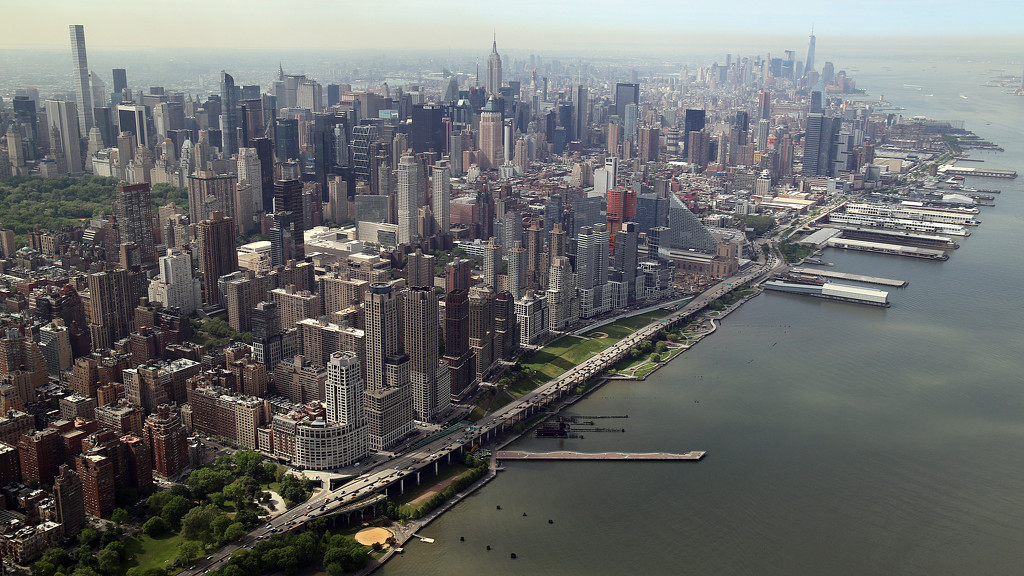The Future of Climate Policy Starts in Our Cities
By Rose DiSarno and Oliver Schaper
Cities are major contributors to climate change. Densely populated urban areas are epicenters for greenhouse gas emissions, overflowing with congested streets, crumbling infrastructure, and an aging building stock equipped with archaically inefficient envelopes and mechanical systems. As we live through the greatest period of urbanization, our profession must rethink how we approach development with an eye towards climate change, adaptability, and resilience. As a firm, we have embraced this as a paramount priority.
In 2009, Gensler signed the Architecture 2030 Agreement, which aims to achieve net-zero in all new buildings by 2030, and to date, the firm is the largest sole contributor to the effort. At the UN Climate Change Conference (COP21) in 2015, Gensler signed the Paris Agreement to be a part of the solution, and this year, Gensler is doubling down on its commitment to combat climate change. By aligning ourselves to these global initiatives, our contributions to sustainable and resilient design can enable communities to resist, mitigate, and recover from the natural and manmade hazards facing today’s cities.
The Mixed Use and Cities + Urban Design practice areas at Gensler New York convened a panel of experts, including NYC Council Member and Environmental Protection Committee Chairman Costa Constantinides, to discuss The Future of Climate Policy. The panelists included Amy Chester (Managing Director of Rebuild by Design), Michael Izzo (Senior VP of Construction at Hines Development), E. Gail Suchman (Partner at Stroock LLP and co-founder of the Urban Design Lab for Sustainable Development at Columbia’s Earth Institute), Adam Friedberg (Cities Group, BurroHappold), and Chris VenderWeyden (Senior Sustainability Specialist, Gensler).
In bringing together experts across the spectrum of policymaking, development, resiliency, engineering, and design, we critically analyzed and constructively assessed the current challenges, setbacks, and potential solutions to the many issues facing our cities today. Panelists discussed the challenges the city faces in terms of aging infrastructure and the complications of shifting away from fossil fuels, as well as the financial burden building owners encounter to bring outdated mechanical systems and poorly performing facades into compliance. The discussion also covered the necessity of education and the vast economic opportunities embedded within this new era of change.
Council Member Constantinides, for example, has proposed to build a wind farm on Rikers Island — the current home of a sprawling prison complex. The island could accommodate enough renewable energy sources to cover much of the city’s energy needs, while providing a prime opportunity to create green jobs, encourage technical innovation, and reduce the city’s dependence on fossil fuels. While this proposal is only in its infancy, it is this type of innovative thinking that can be a catalyst for change in how we approach challenges at the city level.
When it comes to combatting climate change on a global scale, climate policy is often big picture, subject to compromise on the geopolitical stage, and not always legally binding. With goals that are often aspirational and the need for implementation strategies that can enable them in a local context, national and local jurisdictions tend to be more successful in providing supportive policy and legislation. At the city level, some of the most wide-ranging and robust responses to climate change have stemmed from New York City, given the destructive effects of climate change the city has seen.
Since 2008, the New York City Panel on Climate Change has been at the forefront of developing location-specific research that serves as the basis for the city’s climate change mitigation initiatives, such as the city’s Waterfront Revitalization Program. Another successful initiative – Rebuild By Design – was created in response to Hurricane Sandy and established a process of innovation and collaboration across different areas of expertise that utilizes design-driven problem solving, serving as a model for cities around the world to help communities better prepare, respond and become more resilient in the face of challenges.
Likewise, the Climate Mobilization Act, also sponsored by Council Member Constantinides, passed earlier this year to build upon Mayor Bloomberg’s 2007 PlaNYC initiative for a greener, greater city and Mayor DeBlasio’s 2017 1.5° C Plan, which aligns New York City with the goals of the Paris Agreement. Developed over a period of two years with input from the AIA, engineers, public utilities representatives, and environmental justice advocates, this effort establishes stringent greenhouse gas emissions compliance criteria for all new and existing buildings over 25,000 square feet, impacting an estimated 60% of the city’s building area. It is our hope that legislation like the Climate Mobilization Act gains traction in other metropolitan areas to set a course towards a more sustainable future.
As architects, planners, and designers, we have a responsibility to be at the forefront of engagement with those seeking solutions. We believe that through active facilitation of discussions, like The Future of Climate Policy, we can evolve ideas in a multi-disciplinary forum that benefits from a diversity of thought and experience. Engaging in these complex — often sprawling — topics with our peers creates a platform to educate the industry, and ultimately our clients who have the power to help prioritize areas of impact and create avenues for action through integrated thinking.
For media inquiries, email .


